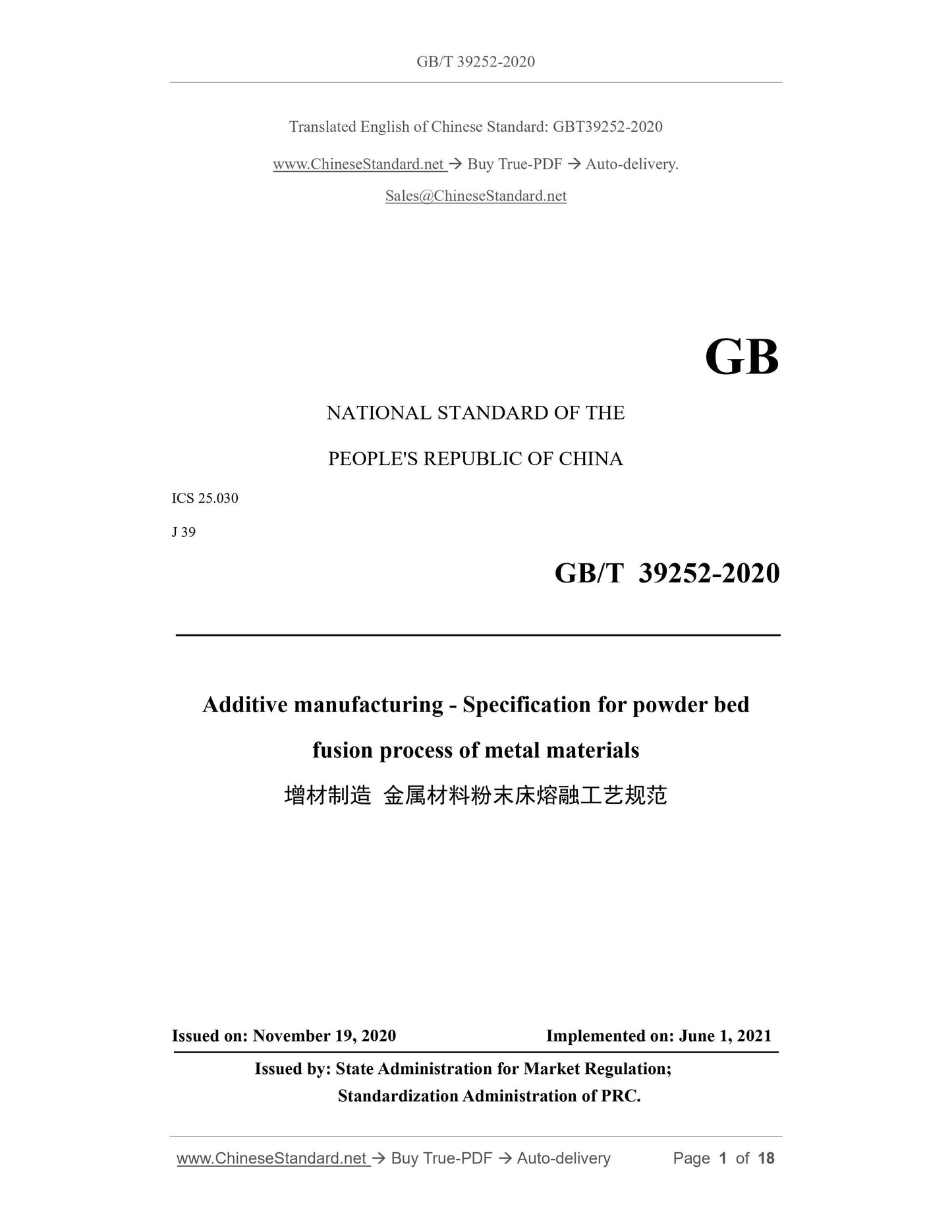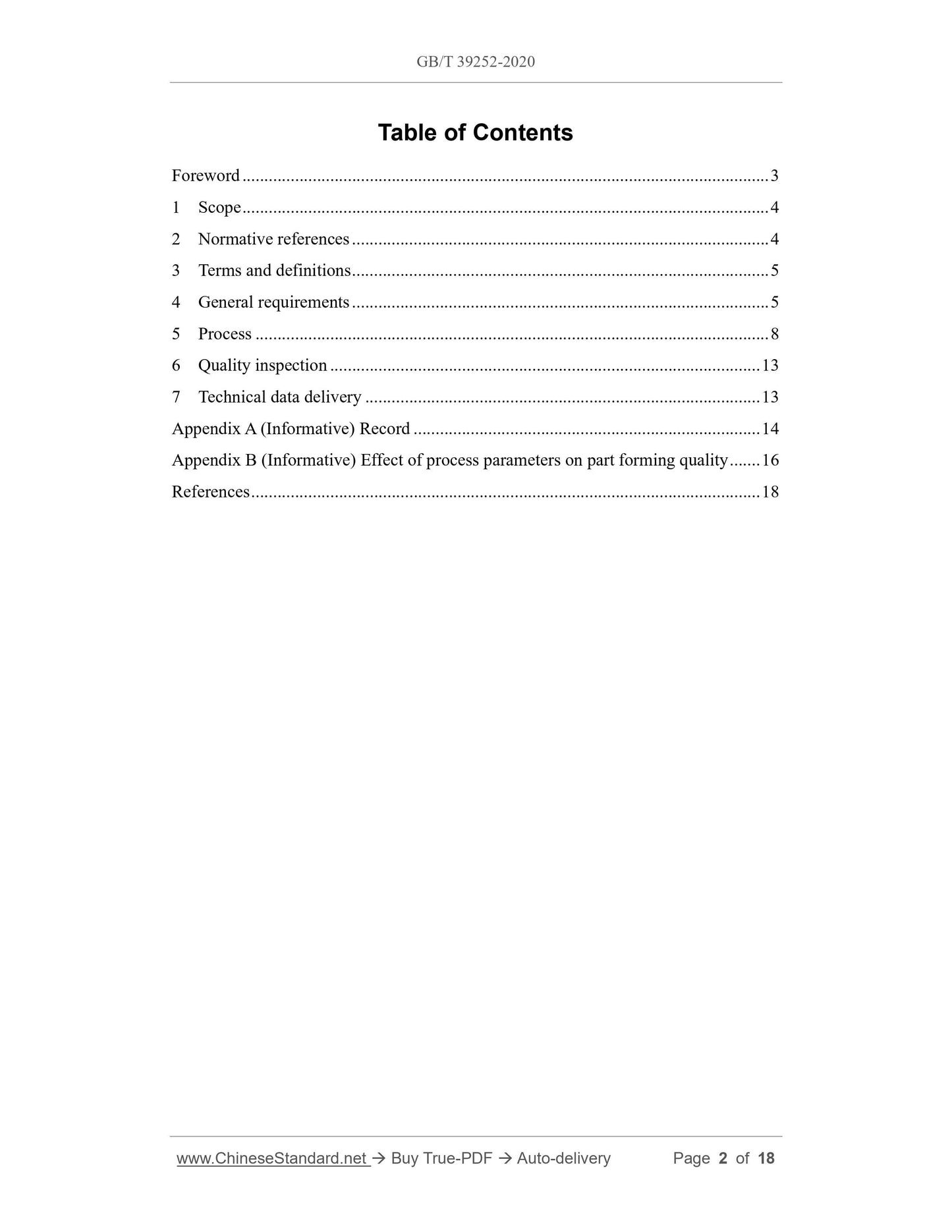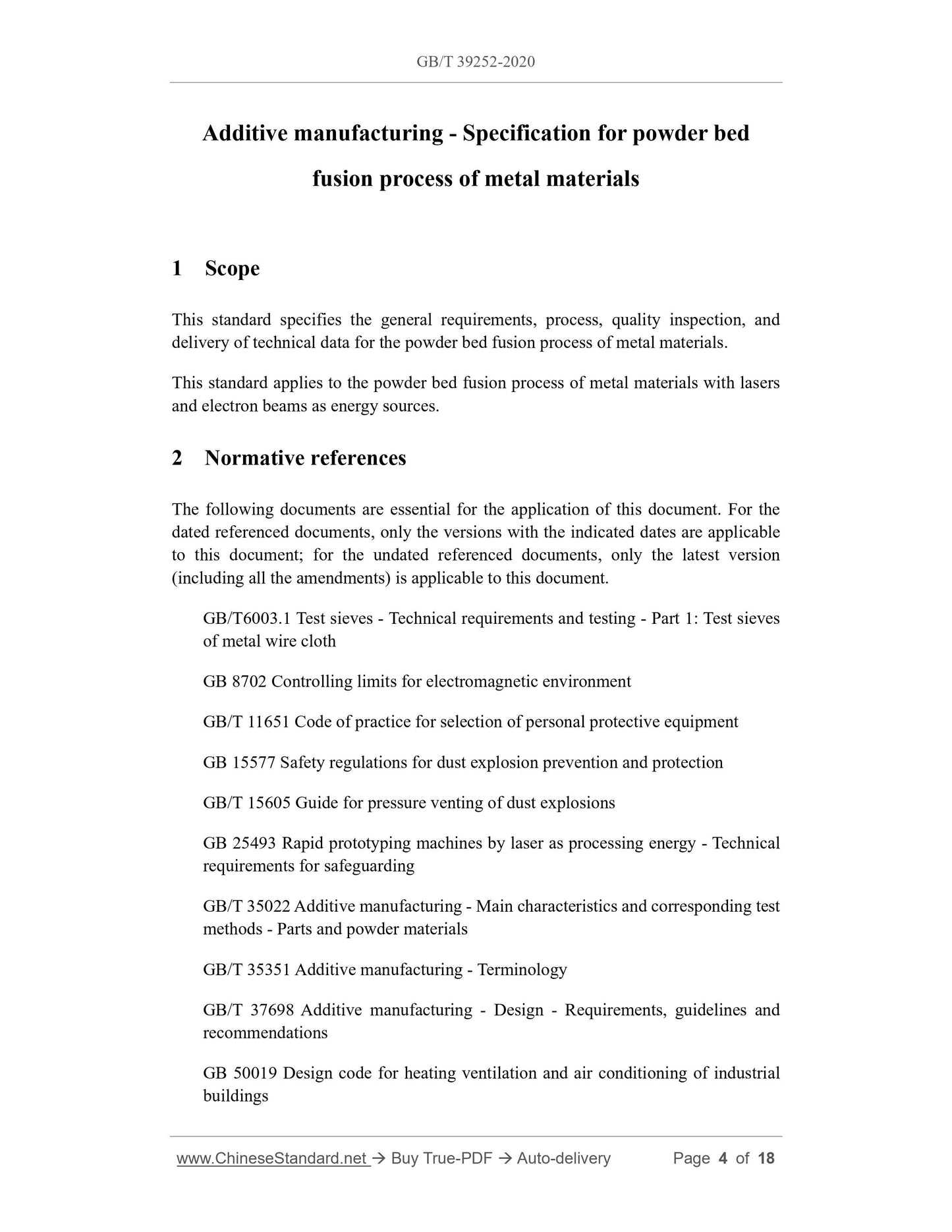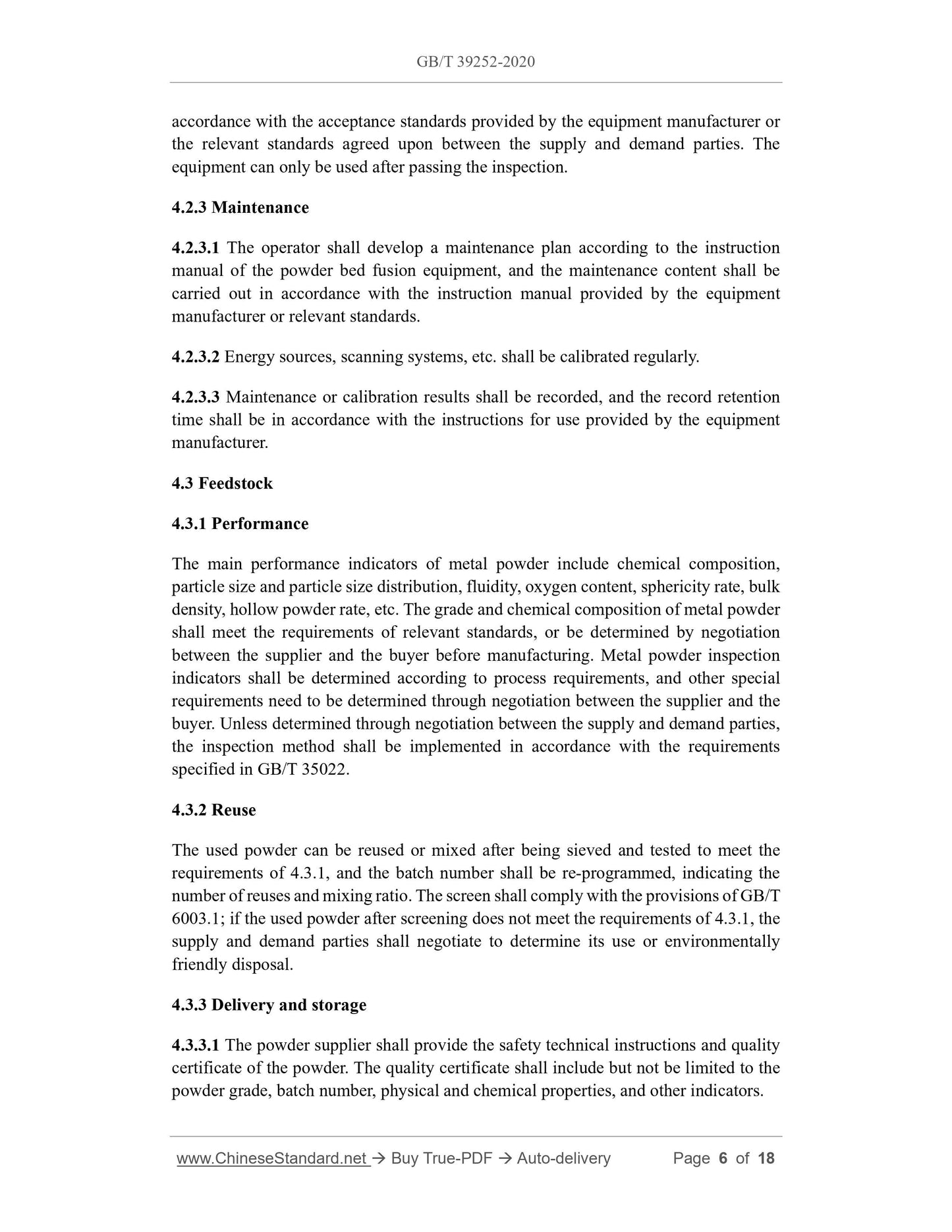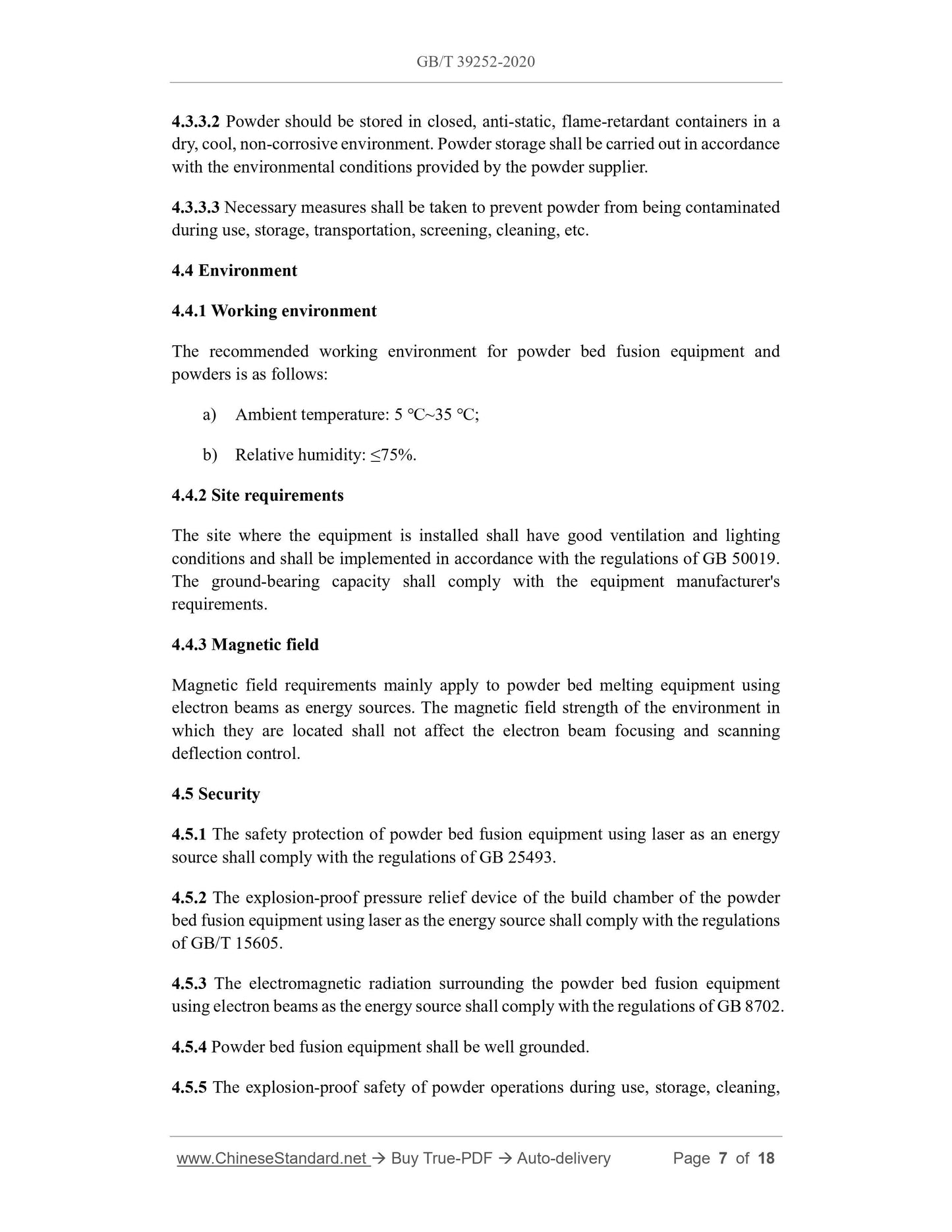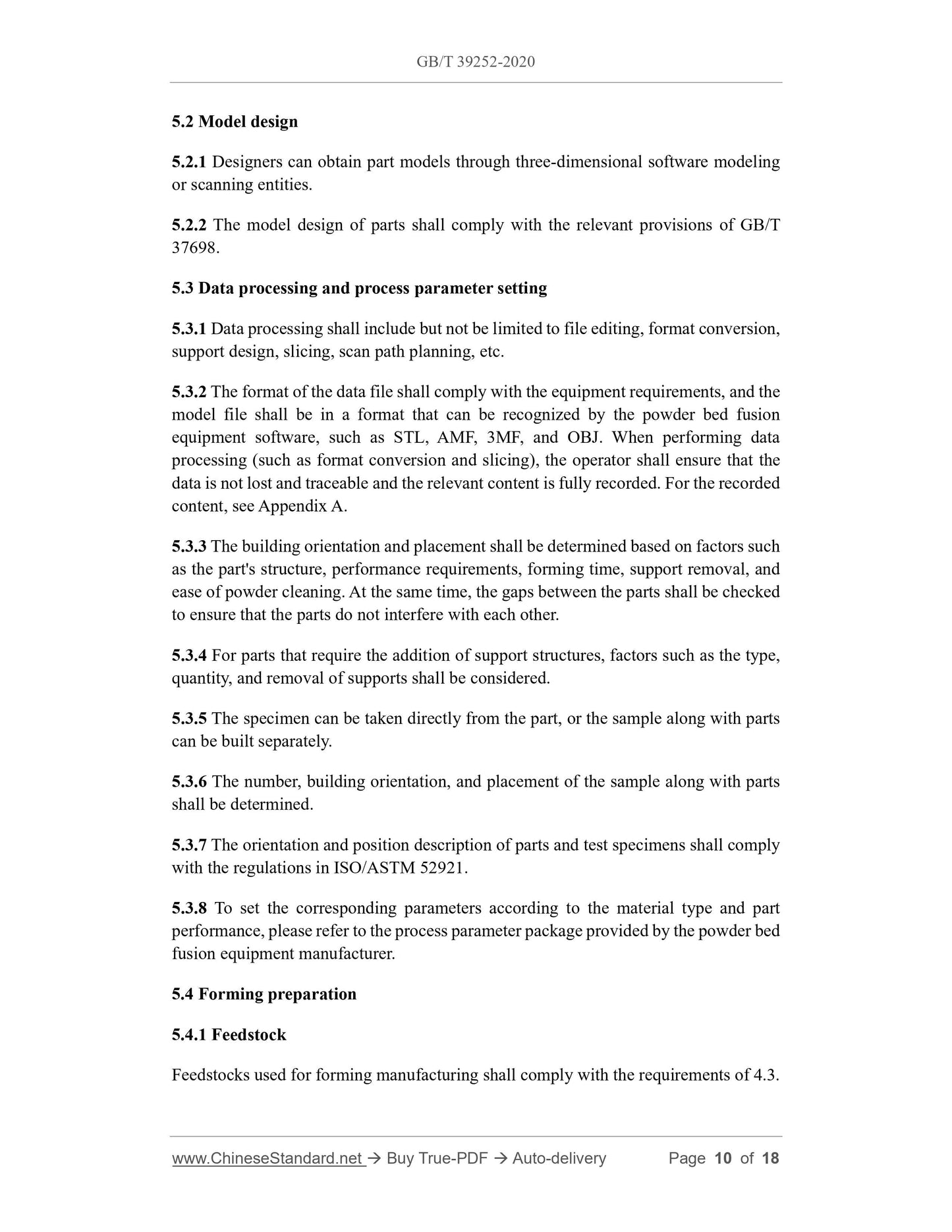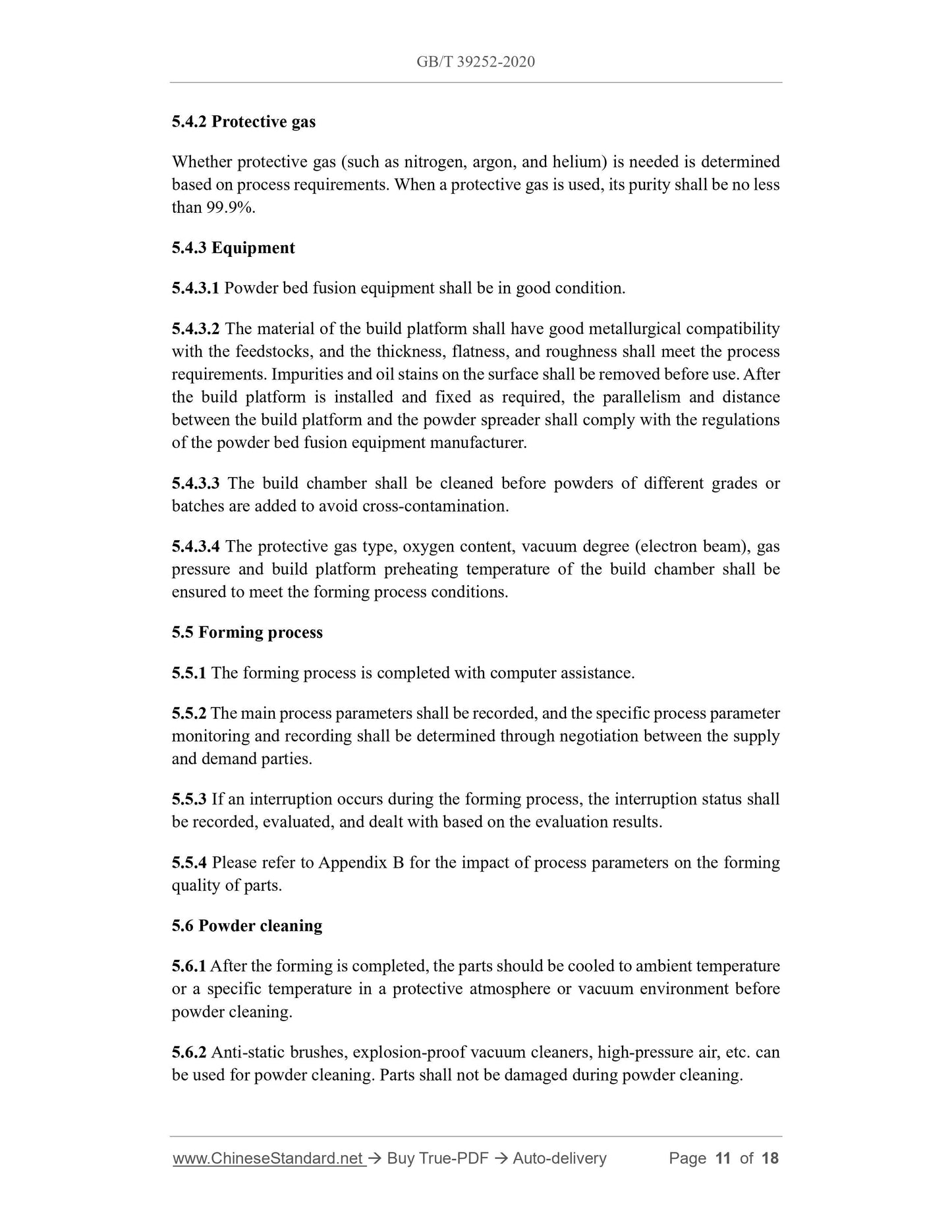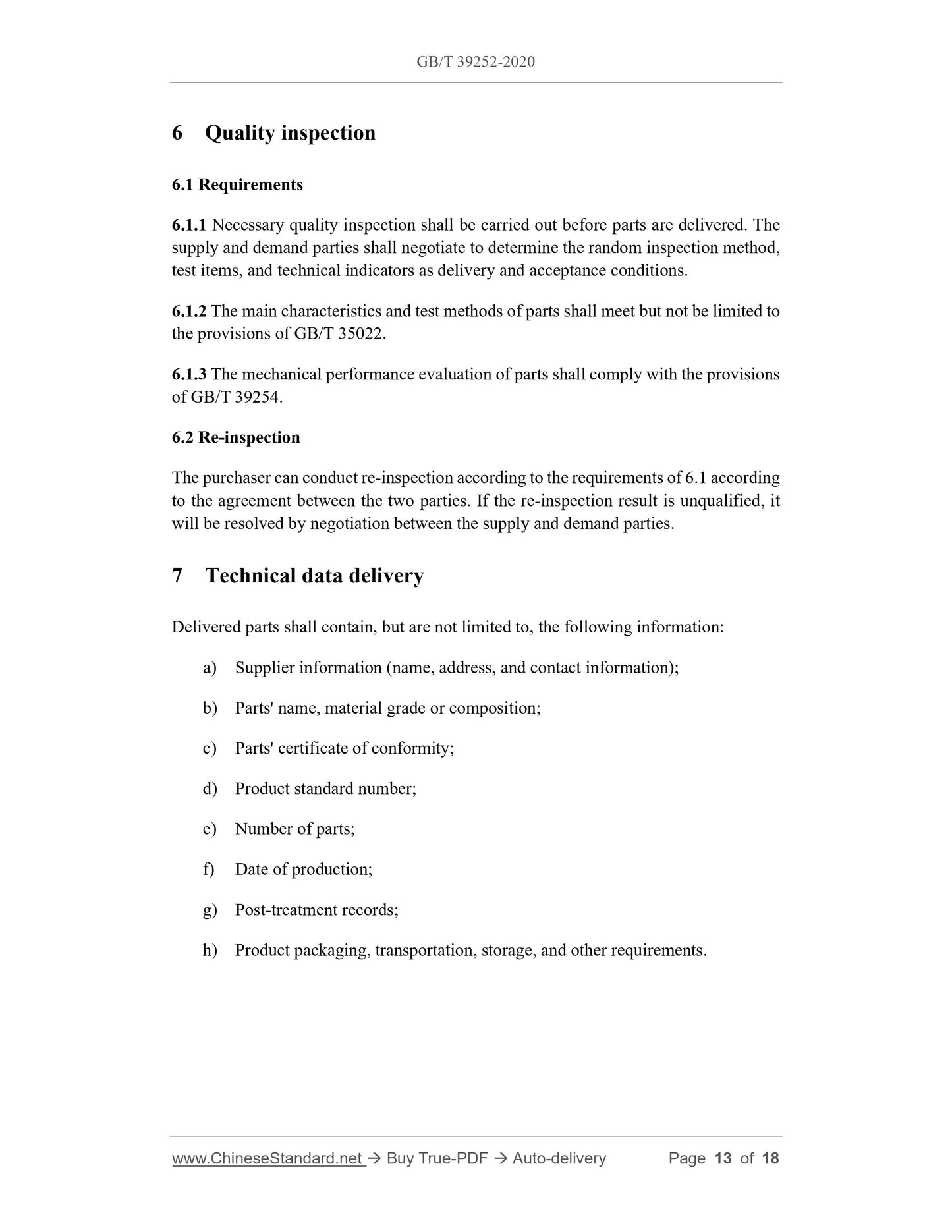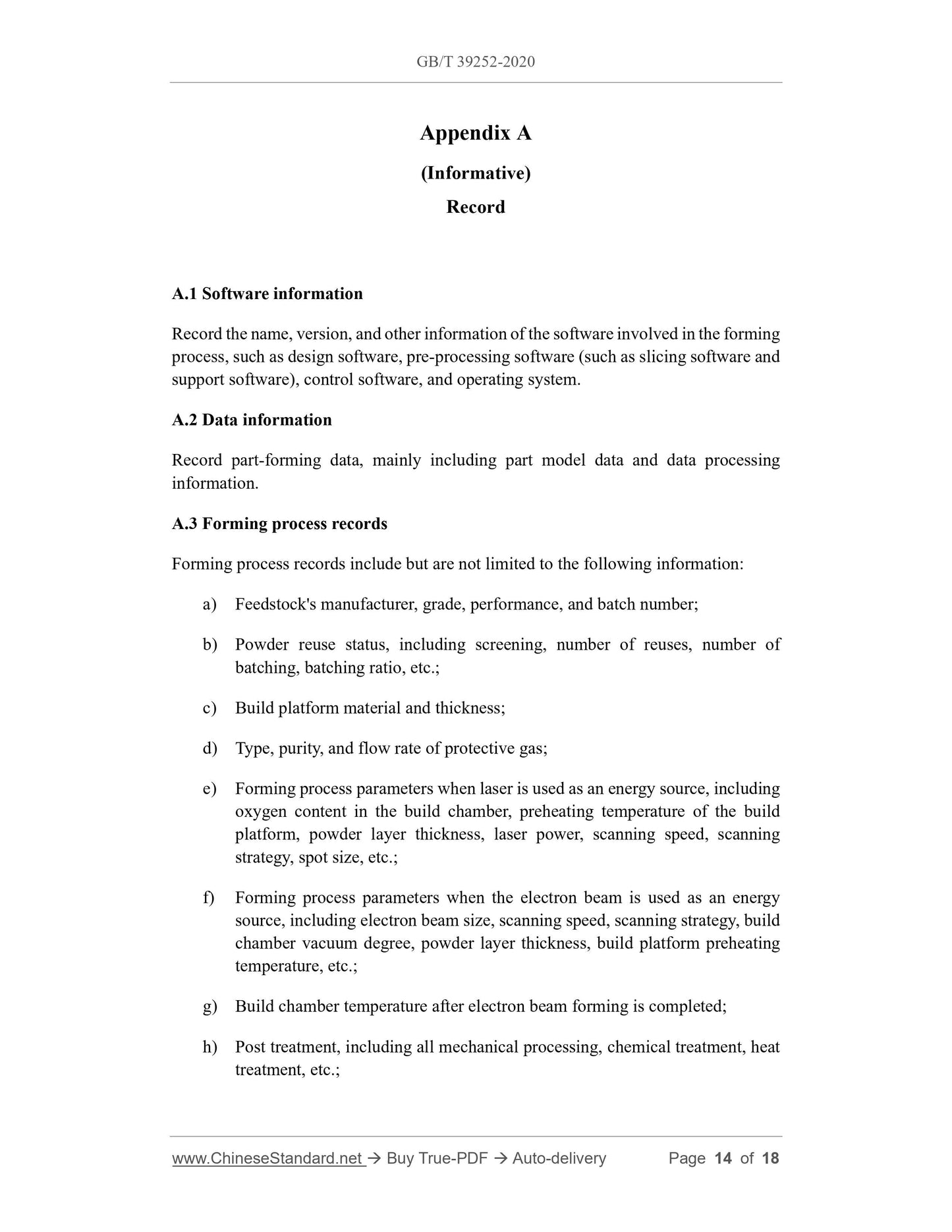1
/
of
9
www.ChineseStandard.us -- Field Test Asia Pte. Ltd.
GB/T 39252-2020 English PDF (GB/T39252-2020)
GB/T 39252-2020 English PDF (GB/T39252-2020)
Regular price
$195.00
Regular price
Sale price
$195.00
Unit price
/
per
Shipping calculated at checkout.
Couldn't load pickup availability
GB/T 39252-2020: Additive manufacturing - Specification for powder bed fusion process of metal materials
Delivery: 9 seconds. Download (and Email) true-PDF + Invoice.Get Quotation: Click GB/T 39252-2020 (Self-service in 1-minute)
Newer / historical versions: GB/T 39252-2020
Preview True-PDF
Scope
This standard specifies the general requirements, process, quality inspection, anddelivery of technical data for the powder bed fusion process of metal materials.
This standard applies to the powder bed fusion process of metal materials with lasers
and electron beams as energy sources.
Basic Data
| Standard ID | GB/T 39252-2020 (GB/T39252-2020) |
| Description (Translated English) | Additive manufacturing - Specification for powder bed fusion process of metal materials |
| Sector / Industry | National Standard (Recommended) |
| Classification of Chinese Standard | J39 |
| Word Count Estimation | 11,117 |
| Date of Issue | 2020-11-19 |
| Date of Implementation | 2021-06-01 |
| Regulation (derived from) | National Standard Announcement No. 26 of 2020 |
| Issuing agency(ies) | State Administration for Market Regulation, China National Standardization Administration |
Share
